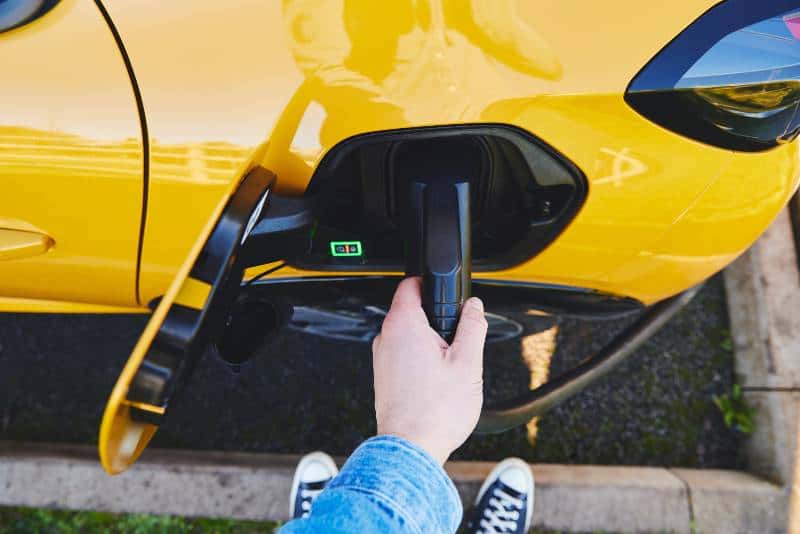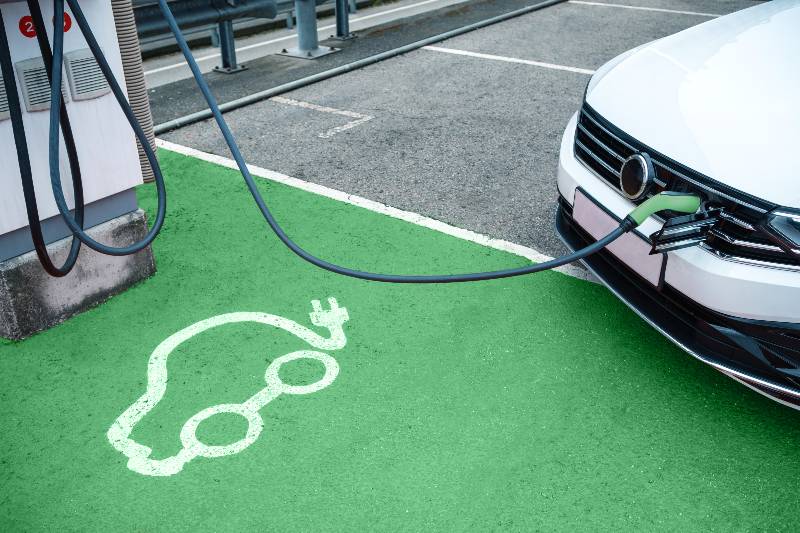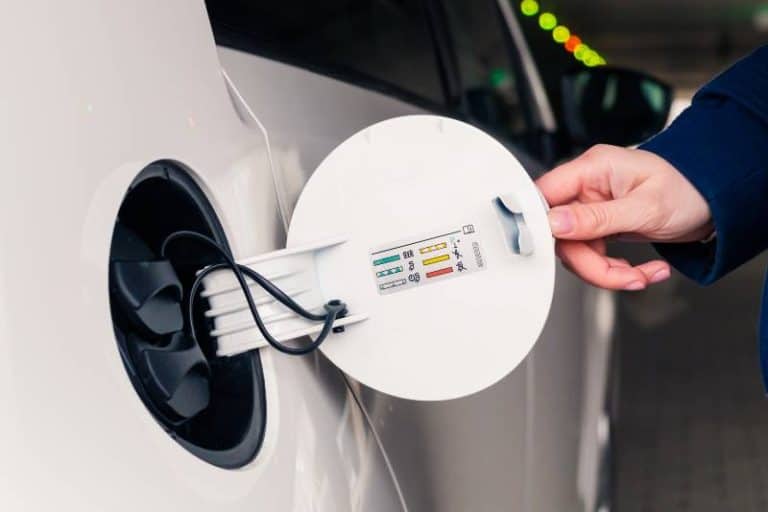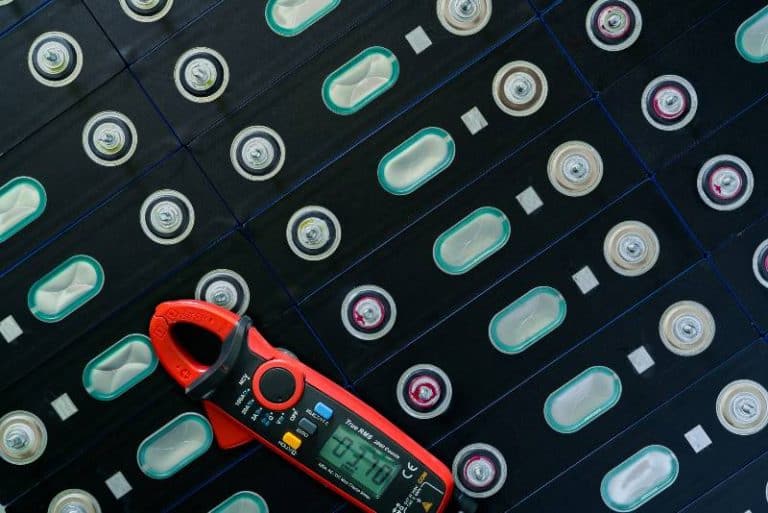Charged Up: A Look at the Future of Electric Vehicles 2024
As technology continues to evolve, the way we think about cars is changing rapidly. We are seeing more and more electric vehicles (EVs) on the roads each day while prices for EVs become increasingly competitive. In 2024, electric vehicles will be at a completely different level from where they are today, and it’s time to start getting excited! These futuristic cars will boast innovative designs that take into account both form and function while advancements in battery technology mean longer driving ranges than ever before. With all of these exciting trends on the horizon, now is an excellent time to look ahead at what the future of EVs might look like in 2024.
By 2025, electric vehicle sales could comprise up to 20% of new car sales · By 2030, electric vehicle sales could reach 40% of new car sale
Key Takeaways
- Technological innovation is key: The progress and future of electric vehicles heavily rely on technological advancements, contributing to improved performance, increased range, and better affordability.
- Infrastructure development will be vital: The growth of the electric vehicle market is tightly connected with the expansion of charging infrastructure. Government support and initiatives are crucial for this development.
- Sustainability is the ultimate goal: The push for electric vehicles is not only about technological advancements or market growth, but it’s fundamentally about achieving a sustainable, carbon-neutral future. This will be an important focus in the coming years.

Historical Perspective
The electric vehicle (EV) industry has experienced substantial growth and progress since its nascence. Initially, EVs were introduced in the market as a response to growing environmental concerns and rising fuel costs. The idea was to develop vehicles that were not only economically viable but also environmentally friendly. Despite these noble intentions, the early EVs faced numerous challenges including limited battery life, extended charging times, and high production costs. These barriers made them less appealing to the average consumer when compared to traditional internal combustion engine (ICE) vehicles.
However, this scenario started to shift in the mid-2000s, particularly with the entry of Tesla, Inc. into the market. Tesla’s Roadster unveiled in 2008, demonstrated that EVs could offer not only environmental benefits but also superior performance and a compelling driving experience. This shook the auto industry, inspiring other companies to start investing in EV technology.
During the subsequent decade, advancements in battery technology played a crucial role in driving the EV revolution forward. Lithium-ion batteries became more energy-dense, more reliable, and most importantly, cheaper. By 2020, the cost of lithium-ion batteries had fallen by almost 90% over the previous decade, helping to close the cost gap between EVs and ICE vehicles.
The charging infrastructure also improved significantly, with more charging stations being installed worldwide and new technologies being developed to reduce charging times. Governments around the globe began to provide incentives and establish regulations to encourage EV adoption, contributing to a shift in public sentiment.
As we now arrive in 2023, the electric vehicle industry is in a state of rapid expansion and increasing competition. Major automobile manufacturers like General Motors, Ford, Volkswagen, and many others have announced their ambitious plans to shift towards electric. Tesla continues to be a dominant player, but it’s no longer alone in the high-performance EV market.
The consumer demand for EVs has been growing exponentially, motivated by a blend of falling prices, improved technology, and increased awareness of environmental issues. The total number of EVs on the road globally is expected to reach hundreds of millions by the mid-2020s.
A diverse range of EVs is available to consumers in 2023, ranging from compact cars to SUVs and trucks, fulfilling the varying needs and preferences of drivers. Electric buses and commercial trucks are also starting to make an impact, particularly in urban areas seeking to reduce carbon emissions and noise pollution.
Innovations such as solid-state batteries, wireless charging, and autonomous driving technologies are on the horizon, promising to bring about the next wave of progress in the EV market. At the same time, companies are focusing on increasing the sustainability of the EV supply chain, with initiatives aimed at responsibly sourcing raw materials and recycling used batteries.
While challenges persist, including ensuring a seamless transition for the workforce affected by the shift from ICE vehicles, improving charging infrastructure in rural and remote areas, and managing the grid load from increased EV charging, the momentum behind the electric vehicle industry is undeniable. The story of EVs has gone from being a niche, environmentalist causes to a major industrial transition reshaping the automotive industry and transportation globally.
This is an exciting time to be part of the EV revolution. As we move forward, it is clear that the journey to sustainable transportation is not without its challenges, but the progress made to date speaks volumes about our capacity for innovation and adaptation. In summary, the current state of the EV market in 2023 is one of growth, innovation, and promise for the future.
Technological Advancements
Let’s delve into the upcoming technological innovations in the electric vehicle (EV) industry and how they could impact performance and affordability.
Solid-State Batteries: This is perhaps the most anticipated breakthrough in the EV industry. Solid-state batteries replace the liquid or polymer gel electrolyte in a conventional lithium-ion battery with a solid material. They have the potential to provide a much higher energy density, which could lead to a greater range for EVs. Moreover, they’re believed to be safer, reducing the risk of battery fires, and they might be able to withstand a larger number of charging cycles, thereby increasing the overall lifespan of the battery. Successful commercialization of solid-state batteries could result in EVs with much better performance and possibly lower costs.
Wireless Charging: Some companies are exploring the possibility of wirelessly charging EVs using resonant inductive coupling. This technology would allow for more convenient charging options and could even open up possibilities for charging while driving, using embedded charging systems in roadways. While the implementation of such a system is likely to be complex and costly initially, over time, it could improve the user experience and efficiency of EVs.
Battery Recycling and Second-life Batteries: The ability to recycle used EV batteries or repurpose them for other energy storage tasks could have a significant impact on the affordability of EVs. By giving batteries a second life or reclaiming valuable materials from spent batteries, the overall cost of battery production could be reduced, contributing to lower EV prices.
Advancements in Autonomous Driving Technologies: While not directly related to performance or affordability, the continued development of autonomous driving technologies could drastically change the value proposition of EVs. By reducing the need for driver attention, the efficiency and safety of road travel could be improved significantly. In the long term, these technologies could contribute to the creation of shared, autonomous EV fleets, lowering the total cost of ownership by spreading it across multiple users.
Lightweight Materials: The application of new lightweight materials in EV construction can lead to significant energy savings, which can translate into improved range and performance. Using advanced composites, high-strength steels, or new alloys could decrease the weight of vehicles, making them more energy-efficient, without compromising safety.
Improved Energy Management Systems: Advancements in software for energy management could allow for more efficient use of battery power, improving the range of EVs. This technology could also lead to better integration with renewable energy sources and smart grid technologies, allowing EV owners to charge during periods of low electricity demand or when renewable energy production is high.
These are some of the technological advancements on the horizon for the electric vehicle industry. Each of these has the potential to improve the performance of EVs, enhance the user experience, and bring down costs. However, realizing these benefits depends on successful development and commercialization, which will require ongoing research, collaboration, and investment. As these innovations come to fruition, they promise to propel the EV industry into its next phase of growth.
Infrastructure Developments
The growth and success of the electric vehicle (EV) industry are largely tied to the development and expansion of charging infrastructure. As the number of EVs on the road continues to rise, so too does the need for reliable, accessible, and efficient charging solutions. The challenge lies not only in quantity, and increasing the number of charging stations, but also in quality, improving charging speed and the overall user experience.
Growth in Charging Infrastructure
The expansion of charging infrastructure is expected to continue at a rapid pace. There’s a growing recognition that the availability of charging stations is a key factor influencing consumers’ decisions to purchase EVs. As such, there’s significant investment going into infrastructure from both the private and public sectors.
Major automakers, energy companies, and dedicated charging infrastructure providers are increasingly involved in building out charging networks. This includes both Level 2 chargers, which typically provide 10-60 miles of range per hour of charging, and DC Fast Chargers, which can often charge an EV battery to 80% in 20-30 minutes.
Moreover, innovative solutions are being explored to improve the convenience and efficiency of charging. For example, the deployment of charging stations at popular retail locations allows customers to charge their EVs while shopping. Similarly, wireless charging technologies, while still in their nascent stage, could eventually allow EVs to be charged without plugging in, potentially even while driving on specially equipped roads.
Government Initiatives
Governments around the world are playing a crucial role in the development of EV charging infrastructure. In many regions, policies and funding programs have been established to support the growth of charging networks.
For instance, in the United States, the federal government has outlined ambitious plans to expand the nation’s charging infrastructure. The goal is to install hundreds of thousands of EV chargers across the country. This initiative forms part of broader plans to accelerate the transition to clean energy and reduce greenhouse gas emissions. It includes a mix of incentives for private investment and direct government funding.
In Europe, several countries have made commitments to drastically increase the number of charging points. The European Union has set targets as part of the Alternative Fuels Infrastructure Directive, which requires member states to establish sufficient charging infrastructure to meet the needs of EV users.
In China, the government’s New Energy Vehicle initiative includes plans for the continued expansion of the country’s charging network. China already has one of the most extensive charging infrastructures globally and is pushing forward with its expansion.
Moreover, many governments are setting standards for charging equipment and protocols to ensure interoperability, so drivers can use any charging station, regardless of their vehicle’s make and model.
These are just a few examples. Governments worldwide are putting in place strategies, incentives, and regulations to facilitate the expansion of charging infrastructure.
Market Predictions for 2024
Predicting the future electric car (EV) market involves looking at various factors such as technological advancements, infrastructure developments, government policies, and consumer behaviors. Based on current trends and expert insights, here’s a glimpse into the anticipated market trends and potential shifts in the landscape of major players and emerging startups in 2024.
Anticipated Market Trends
Rise in EV Sales: With more affordable and diverse options available, EV sales are expected to continue their upward trajectory. In many regions, the cost parity between EVs and traditional internal combustion engine vehicles is expected to be achieved in the mid-2020s, further boosting sales.
Increased Range: As battery technology improves, we can anticipate a significant increase in the range of electric vehicles. This will address one of the biggest concerns for potential EV buyers – range anxiety.
Greater Charging Infrastructure: Continued expansion of charging infrastructure will make owning an EV more convenient, even for those without the ability to install home chargers.
The emergence of New Business Models: The rise of EVs may encourage the growth of new business models, such as Battery-as-a-Service (BaaS), where customers don’t own the battery in their vehicle and instead lease it, swapping it out when it’s depleted.
Autonomous Driving: While full autonomy may still be a few years away, advancements in autonomous driving technologies will likely lead to an increase in vehicles equipped with high-level driver-assist systems.
Increased Electrification in Commercial Vehicles and Public Transport: We’re likely to see more electric buses, delivery vans, and trucks on the road as companies and municipalities look to reduce their carbon footprints.
Also, don’t miss out on reading this insightful article where I comprehensively explain the revolutionary concept of Solar-Powered Electric Cars: The New Era of Clean Transportation. Dive into the fascinating world of sustainable mobility, uncovering the environmental benefits, technological advancements, and potential impact on the future of transportation. Explore how these innovative vehicles harness the power of the sun to drive us toward a greener and more sustainable future.
Major Players and Emerging Startups
The Dominance of Established Players: Tesla is expected to remain a dominant force in the EV market, thanks to its brand recognition, superior technology, and established infrastructure. Traditional automakers like General Electric Motors, Ford, and Volkswagen are also likely to increase their market shares as they shift more of their production to EVs.
Rise of Chinese Automakers: Chinese manufacturers, such as BYD and NIO, who have been making significant inroads in their domestic market, may begin to expand internationally in earnest, changing the global market dynamics.
Emergence of New Entrants: We can expect to see new startups entering the EV market, particularly in niche areas. Companies that focus on innovative battery technologies, autonomous driving systems, or unique vehicle designs could start to make their presence felt.
Consolidation and Partnerships: As the market matures, there may be some consolidation, with larger companies acquiring startups to gain access to new technologies. We might also see more partnerships, as companies look to share the costs and risks associated with developing new technologies and infrastructure.
These predictions provide a general sense of what we might expect in the EV market in 2024. However, it’s worth noting that the pace of change in the automotive industry can be influenced by numerous factors, including economic conditions, policy changes, and technological breakthroughs. Therefore, while the direction of travel seems clear, the speed and exact route can be full of surprises.
Environmental Impact
The electric vehicle (EV) industry plays a critical role in reducing the impact of climate change and promoting sustainable practices. EVs emit significantly less greenhouse gases compared to traditional internal combustion engine (ICE) vehicles, especially when charged with electricity from renewable sources. As the adoption of EVs continues to grow, this could lead to a substantial reduction in global carbon emissions.
However, the production and disposal of EVs and their batteries also have environmental impacts that need to be considered. Let’s look at both these aspects in a bit more detail.
Predicted Effects on the Environment and Climate Change
With a continued shift towards EVs, we could see a significant decrease in the greenhouse gas emissions that contribute to global warming. Given that transportation accounts for nearly a quarter of global CO2 emissions, a wide-scale transition to EVs could substantially help in achieving climate goals.
Moreover, local air quality would also improve. EVs produce zero tailpipe emissions, which means they don’t emit harmful pollutants such as nitrogen oxides and particulate matter. This can contribute to better health outcomes, particularly in urban areas where air pollution is a significant problem.
However, it’s essential to remember that EVs are only as clean as their power source. The environmental benefits of EVs are maximized when they are charged with renewable energy. As the electricity grid becomes greener, the benefits of switching to EVs increase.
The production of EVs and their batteries, particularly the extraction of raw materials like lithium, cobalt, and nickel, can also have significant environmental impacts. These include habitat destruction, water pollution, and greenhouse gas emissions. Additionally, concerns have been raised about the end-of-life treatment of EV batteries and the need for effective recycling to prevent harmful environmental consequences.
Sustainability Initiatives in the Electric Vehicle Industry
Recognizing these challenges, many players in the EV industry are taking steps to make their operations more sustainable.
Responsible Sourcing: Several companies are making efforts to responsibly source the raw materials for their batteries. This includes ensuring that materials are extracted in a way that minimizes environmental damage and respects human rights.
Battery Recycling: There is a growing focus on battery recycling to reclaim valuable materials from used batteries. This not only reduces the demand for new raw material extraction but also helps manage the waste generated when batteries reach their end of life. Companies like Tesla are working on proprietary battery recycling systems, and several startups are also focusing on this area.
Improving Energy Efficiency: Efforts are being made to increase the energy efficiency of EVs, which can help reduce their environmental impact. This includes the use of lightweight materials, improvements in battery technology, and better energy management systems.
Using Renewable Energy: Many automakers are committing to powering their manufacturing operations with renewable energy. For example, Volkswagen Group has set a goal to become carbon neutral by 2050, which includes using renewable energy in its factories.
Second-Life Batteries: Some companies are exploring the use of second-life batteries, which involves taking batteries that are no longer suitable for use in vehicles and repurposing them for less demanding applications, such as stationary energy storage. This can extend the useful life of batteries and delay the need for recycling or disposal.
While the shift towards EVs presents a significant opportunity to mitigate the impacts of climate change and improve local air quality, it’s important that the industry continues to address the environmental challenges associated with the production and disposal of EVs and their batteries. The sustainability initiatives underway are encouraging, and continued innovation and regulation in these areas will be critical as the EV market continues to grow.
Potential Challenges and Solutions
The electric vehicle (EV) industry, though filled with immense potential, also faces numerous challenges. However, each of these hurdles presents an opportunity for innovation, collaboration, and policy intervention. Let’s discuss some of the key roadblocks and potential strategies to overcome them.
Charging Infrastructure: As the number of EVs on the road grows, there’s an increasing need for a robust, widespread charging infrastructure that can cater to these vehicles. The lack of adequate charging stations, particularly in rural or remote areas, can deter potential EV buyers.
Solution: Governments and private sector players must continue investing in the expansion and modernization of the charging infrastructure. Public-private partnerships could accelerate this development. Additionally, innovations such as ultra-fast chargers and wireless charging could also help address this issue.
Range Anxiety: Despite advancements in technology, range anxiety remains a significant concern for many potential EV buyers. The fear that a vehicle will run out of charge before reaching its destination or a charging point can limit EV adoption.
Solution: Continued advancements in battery technology and energy management systems to increase the range of EVs are vital. Simultaneously, a more extensive and visible charging infrastructure could help alleviate range anxiety.
Battery Cost and Performance: While the costs of batteries have been falling, they still represent a significant portion of an EV’s total cost. Furthermore, issues related to battery lifespan and performance, particularly in extreme weather conditions, can pose challenges.
Solution: Ongoing research and development in battery technology, including solid-state batteries and other next-generation solutions, is crucial. Additionally, novel business models like battery leasing or battery swapping could potentially reduce upfront costs for consumers.
Raw Material Supply and Sustainability: The production of batteries requires certain critical raw materials, the extraction of which can have environmental and human rights implications. Securing a stable supply of these materials could also become a challenge as demand rises.
Solution: Companies should commit to responsible sourcing practices and greater supply chain transparency. In parallel, efforts should be made to develop batteries that rely less on scarce or problematic materials. Battery recycling programs can also help reclaim some of these materials from end-of-life batteries.
Grid Capacity and Stability: A significant increase in EV usage could put a strain on the electricity grid, particularly during peak charging times.
Solution: Upgrading grid infrastructure and implementing smart grid technologies can help manage increased demand. Additionally, vehicle-to-grid (V2G) technologies, where EVs return power to the grid during peak demand, could also help balance the load.
Policy and Regulation: Inconsistent or unfavorable policy environments can hinder the growth of the EV market. This includes everything from fuel economy standards to emissions regulations to EV incentives.
Solution: Governments have a crucial role to play in fostering a supportive policy environment for EVs. This could include offering purchase incentives for EVs, setting more stringent emissions standards, and providing funding for charging infrastructure development.
While these challenges are substantial, they are not insurmountable. They require concerted efforts from automakers, governments, technology companies, and consumers. With the right blend of innovative solutions, strategic collaborations, and supportive policies, the road ahead for electric vehicles can be both exciting and sustainable.
Future Of Electric Vehicles 2024 FAQs
What potential challenges could the electric vehicle industry face in 2024?
In 2024, the future electric cars and the vehicle industry (electric pickup, etc.) could face challenges such as a lack of access to charging infrastructure in rural or remote areas, range anxiety due to limited battery capacity and performance, cost of batteries, securing a stable supply of raw materials for battery production, strain on the electricity grid, and inconsistent policy environments.
What strategies are being developed to overcome potential challenges in the electric vehicle industry?
Strategies to overcome potential challenges in the electric vehicle industry include investing in the expansion and modernization of charging infrastructure (e.g., ultra-fast chargers, wireless charging), continued advancements in battery technology and energy management systems, public-private partnerships for developing EV charging infrastructure, vehicle-to-grid technologies to balance the load on the electricity grid, offering purchase incentives for EVs, setting more stringent emissions standards, and providing funding for charging infrastructure development.
How has the electric vehicle market evolved till 2023?
The electric vehicle market has seen significant growth in the past few years. In 2023, the global electric vehicle market was estimated to be worth $222.9 billion USD, up from $176.7 billion USD in 2019. This growth is largely attributed to increasing consumer demand and government initiatives such as EV subsidies and incentives, improved battery technology, greater access to charging infrastructure, and growing public awareness of the benefits of now and future electric vehicles.
For example, with conservative but futuristic looks and 250 miles of estimated range in base form, all for around $30,000. Here’s all the info on the Equinox EV 2024 Chevrolet Silverado EV Chevrolet Chevy’s first electric Silverado is its most important vehicle in years, set to compete against the Ford F-150 Lightning and the Ram 1500 REV, but also newcomers like the Rivian R1T and eventually, the Tesla Cybertruck. With up 450 miles of range available, we have high hopes.
How are governments worldwide contributing to the development of electric vehicles?
Governments worldwide are contributing to the development of all electric vehicles by offering purchase incentives for EVs, setting more stringent emissions standards, funding research and development of technological advancements (e.g., battery technology, energy management systems), providing subsidies and tax credits for EV purchases or leases, and investing in the expansion and modernization of charging infrastructure.
Are electric vehicles expected to be more affordable in 2024?
Yes, electric vehicles are expected to be more affordable in 2024 due to advancements in battery technology and energy management systems, public-private partnerships for developing EV charging infrastructure, vehicle-to-grid technologies to balance the load on the electricity grid, purchase incentives offered by governments, and increased availability of used EVs.
Conclusion
The future of electric vehicles looks bright and promising, but their success heavily relies on a strong commitment from the government and private sector. As EV technology continues to improve and expand, so should charging infrastructure that is currently inadequate for international adoption. We need continuous research in battery technology improvement in order to have EVs with greater range and affordability.
Going forward, it is critical that policymakers consider the value of incentives for EV purchases and investments toward infrastructure. We must coordinate public investment with private investors in EV technology initiatives to both drive innovation and contain costs.
Everyone who desires a greener future should get involved in order to further electric cars as well as luxury electric cars. Take a stand and get informed by signing up for our newsletter today – together we can fight climate change, one green car at a time!
The potential of the electric vehicle industry is enormous, and with the right strategies in place, we can help create a more sustainable future. Together, we can make sure that electric SUV is also an integral part of our lives by 2024.






